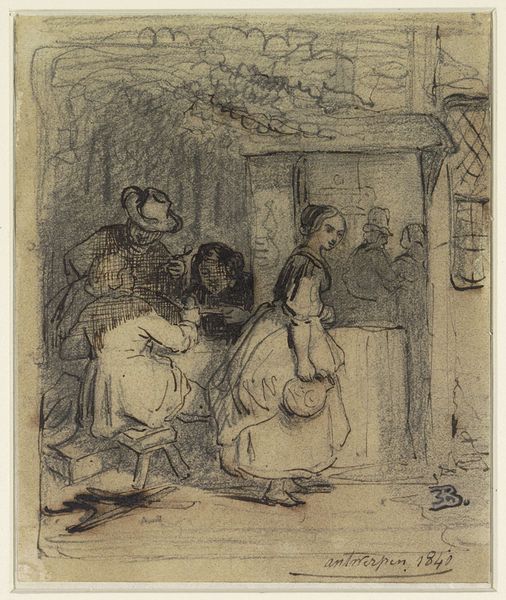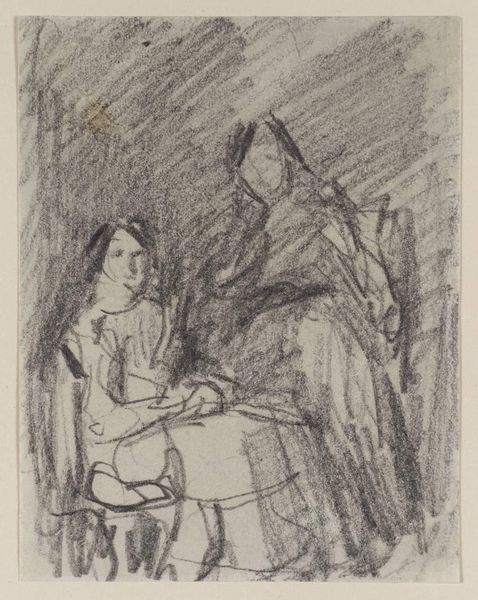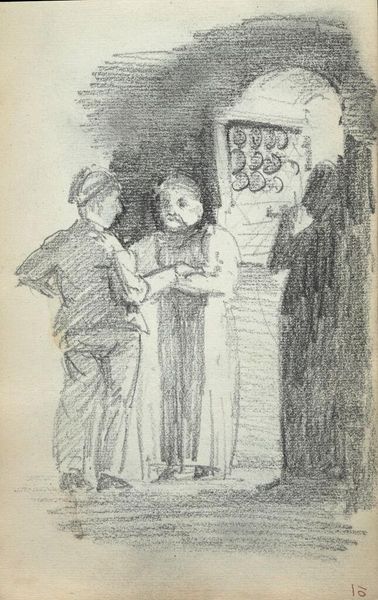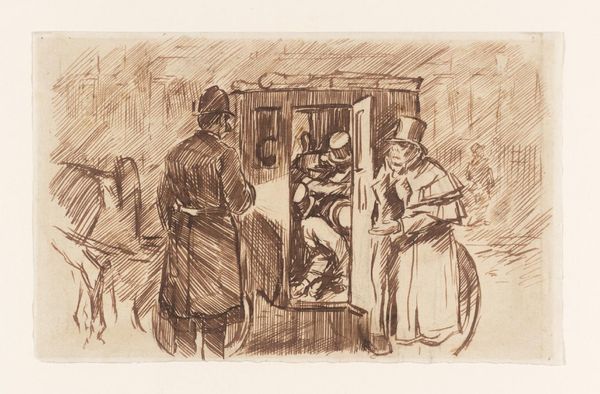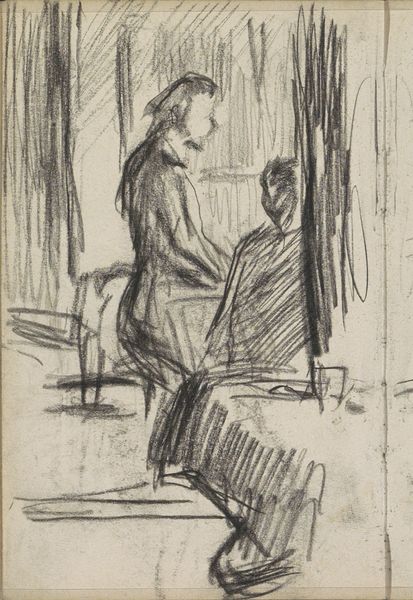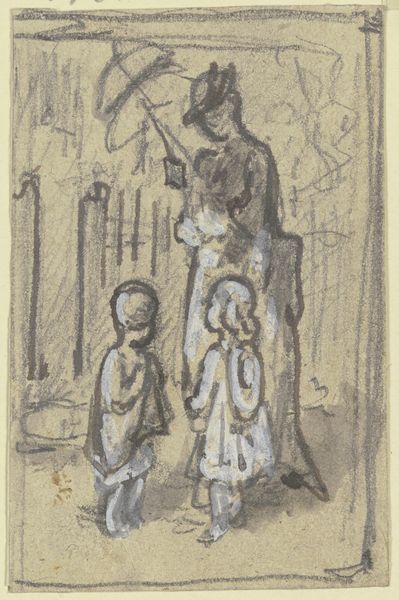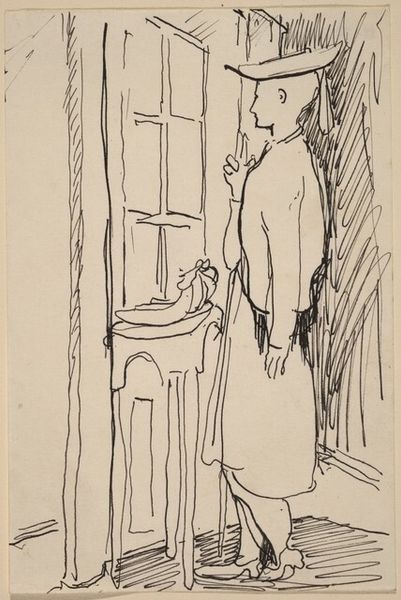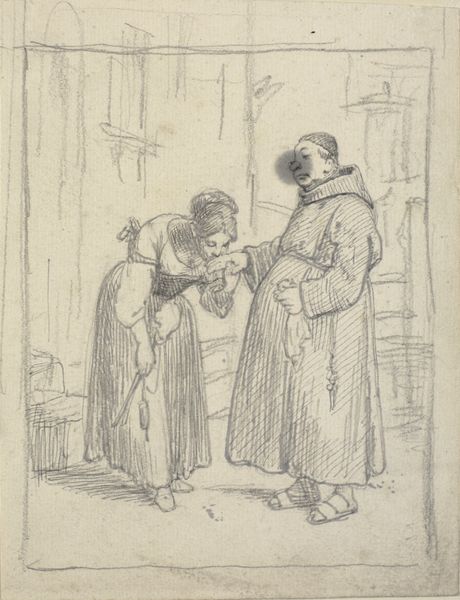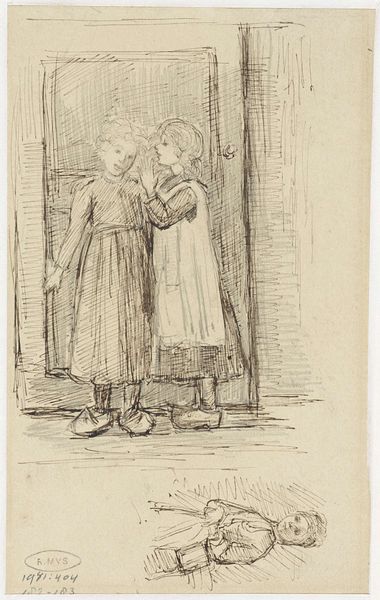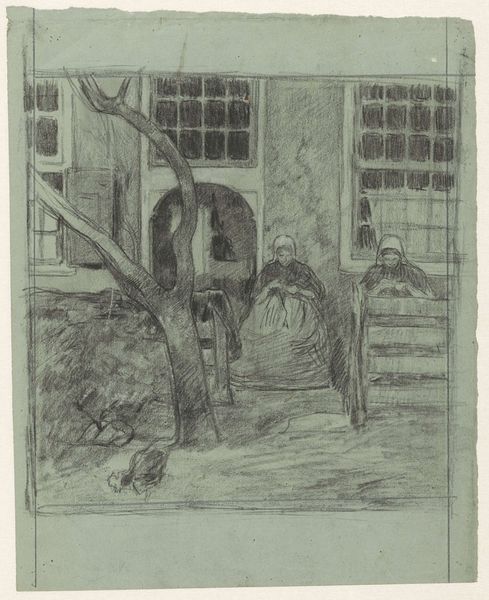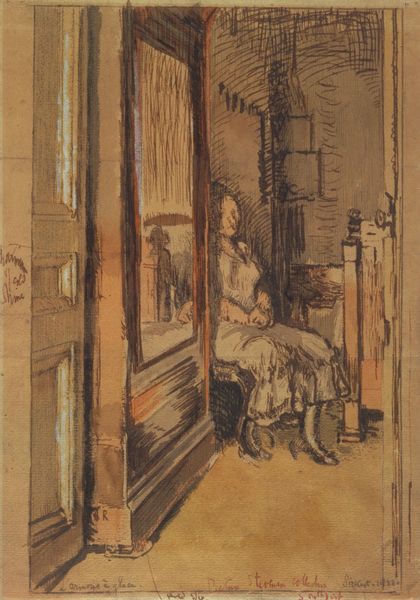
Copyright: Public Domain: Artvee
Editor: Here we have Camille Pissarro’s "Beggar Women," made with colored pencils and pencil on paper, sometime between 1889 and 1899. I find the scene rather somber, almost resigned. What can you tell us about it? Curator: Let’s consider the material conditions of this piece. Pissarro chose readily available, inexpensive materials—pencil and colored pencil on paper. What does that tell us about his process and perhaps his intentions? Editor: Maybe it suggests a quick study, something he dashed off without much planning or pretense? Curator: Precisely. But look closer at the layering of colors, the way he builds form through repeated strokes. It’s economical but deliberate, turning ordinary tools into something expressive. Consider too, the subject matter – working-class women. How does the medium relate to the message here? Editor: Maybe using common materials connects the artwork to the everyday lives of these women, rather than glorifying them with, say, oils and canvas? The drawing style feels immediate. Curator: Exactly. Pissarro uses accessible materials and techniques to portray the lived realities of these women, challenging academic conventions of art production. It highlights their labor, even within the artistic process itself. Editor: I hadn’t considered that—how the materials themselves reflect the social context. I’m seeing this in a totally new light. Curator: Focusing on the "how" of art – the means of its production and reception – helps us understand the “why”. Materiality isn't just about aesthetics; it’s deeply entangled with social meaning. Editor: Thanks, that's a very helpful framework for thinking about this work and others too. Curator: And seeing those connections deepens our understanding of not just art, but its role within the world.
Comments
No comments
Be the first to comment and join the conversation on the ultimate creative platform.
